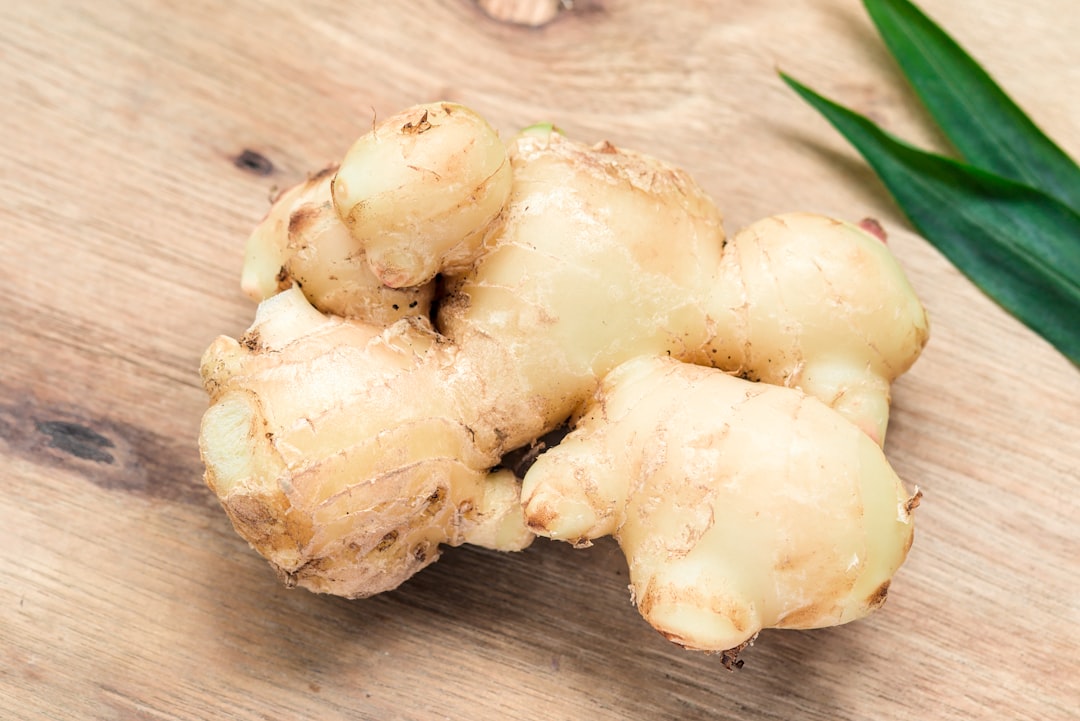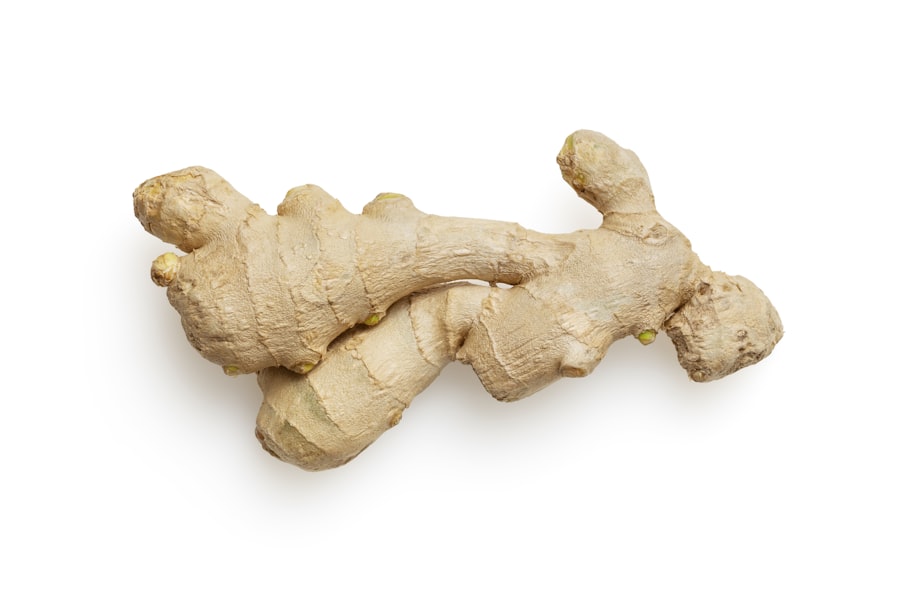Growing Ginger: Tips for a Thriving Harvest

Ginger is a versatile and widely used spice that has been cultivated for centuries. It is known for its distinct flavor and aroma, as well as its numerous health benefits. Ginger can be used in a variety of dishes, from savory to sweet, and is also commonly used in home remedies for various ailments. Growing ginger in your garden not only allows you to have a fresh supply of this wonderful spice at your fingertips, but it also adds beauty and diversity to your garden.
Choosing the Right Ginger Variety for Your Garden
There are several different types of ginger that you can choose to grow in your garden. The most common variety is Zingiber officinale, which is the type of ginger that you typically find in grocery stores. This variety has a spicy and slightly sweet flavor, making it perfect for cooking and baking. Another popular variety is Galangal ginger, which has a more pungent and citrusy flavor. This type of ginger is commonly used in Thai cuisine.
When choosing a ginger variety for your garden, there are several factors to consider. First, think about the climate in your area. Some varieties of ginger are more cold-tolerant than others, so if you live in a colder climate, you may need to choose a variety that can withstand lower temperatures. Additionally, consider the space you have available in your garden. Some varieties of ginger can spread quite aggressively, so if you have limited space, you may want to choose a more compact variety.
Preparing the Soil for Ginger Planting
Ginger plants prefer well-draining soil that is rich in organic matter. Before planting ginger, it is important to prepare the soil properly to ensure optimal growth. Start by removing any weeds or grass from the area where you plan to plant the ginger. Then, loosen the soil with a garden fork or tiller to a depth of about 12 inches.
Next, amend the soil with organic matter such as compost or well-rotted manure. This will help improve the soil structure and provide essential nutrients for the ginger plants. Spread a layer of organic matter over the soil and mix it in thoroughly using a garden fork or tiller. Finally, level the soil and remove any large clumps or rocks.
Planting Ginger: Best Practices and Techniques
| Best Practices and Techniques for Planting Ginger | |
|---|---|
| Soil pH | 5.5-6.5 |
| Planting Depth | 2-4 inches |
| Spacing | 8-10 inches apart, 3-4 feet between rows |
| Watering | Regularly, but avoid overwatering |
| Fertilizer | Apply a balanced fertilizer every 4-6 weeks |
| Harvesting | 9-10 months after planting, when leaves start to yellow and die back |
| Storage | Clean and dry ginger, store in a cool, dry place |
The timing and spacing for planting ginger will depend on your climate and the variety of ginger you are growing. In general, ginger is planted in the spring after the last frost date. The rhizomes should be planted about 2 to 4 inches deep, with the buds facing up. Space the rhizomes about 8 to 12 inches apart to allow room for growth.
To plant ginger, dig a hole that is wide enough to accommodate the rhizome and deep enough so that the top of the rhizome is level with the soil surface. Place the rhizome in the hole with the buds facing up, and cover it with soil. Gently firm the soil around the rhizome to ensure good contact.
Watering and Fertilizing Ginger for Optimal Growth
Ginger plants require regular watering to ensure optimal growth. They prefer moist soil, but it is important not to overwater as this can lead to root rot. Water the plants deeply once or twice a week, depending on weather conditions. The soil should be kept evenly moist but not waterlogged.
In terms of fertilizing, ginger plants benefit from regular applications of organic fertilizer. Apply a balanced organic fertilizer every four to six weeks during the growing season. This will provide essential nutrients for healthy growth and help promote strong root development.
Managing Pests and Diseases in Your Ginger Garden

Like any plant, ginger is susceptible to pests and diseases. Some common pests that can affect ginger plants include aphids, spider mites, and root-knot nematodes. These pests can cause damage to the leaves and roots of the plants, leading to stunted growth and reduced yields.
To manage pests in your ginger garden, it is important to practice good garden hygiene. Remove any weeds or debris from the garden area, as these can harbor pests. Additionally, monitor your plants regularly for signs of pest infestation and take appropriate action if necessary. This may include using organic pest control methods such as insecticidal soap or neem oil.
Harvesting Ginger: When and How to Do It
Ginger is typically ready for harvest about 8 to 10 months after planting. The signs that ginger is ready for harvesting include yellowing leaves and dying back of the foliage. To harvest ginger, carefully dig around the base of the plant with a garden fork or shovel. Lift the rhizomes out of the ground, being careful not to damage them.
After harvesting, gently brush off any excess soil from the rhizomes. Trim off any damaged or diseased parts, and set aside any rhizomes that you plan to use immediately. The remaining rhizomes can be stored for later use.
Storing and Preserving Ginger for Long-Term Use
Fresh ginger can be stored in several ways to ensure long-term use. One method is to store it in the refrigerator. Simply wrap the ginger in a paper towel and place it in a plastic bag or container. This will help keep the ginger fresh for several weeks.
Another method for storing ginger is to freeze it. To do this, peel and chop the ginger into small pieces. Place the pieces in a freezer bag or container and store in the freezer. Frozen ginger can be grated or chopped directly from the freezer and used in recipes.
Propagating Ginger: How to Grow More Plants from One
If you want to grow more ginger plants from one, you can easily propagate ginger using rhizome cuttings. To do this, select a healthy and mature ginger rhizome. Cut it into smaller pieces, making sure that each piece has at least one bud or eye.
Plant the rhizome cuttings in a pot or directly in the garden, following the same planting techniques as for mature rhizomes. Keep the soil moist and provide the same care as you would for mature ginger plants. The cuttings will develop roots and shoots, eventually growing into new ginger plants.
Using Ginger in Your Cooking and Home Remedies
Ginger is a versatile spice that can be used in a variety of dishes. It adds a unique flavor and aroma to both savory and sweet recipes. In cooking, ginger can be used fresh, dried, or ground. It pairs well with a variety of ingredients, including meats, vegetables, and fruits.
In addition to its culinary uses, ginger is also commonly used in home remedies for various ailments. It is known for its anti-inflammatory and digestive properties, making it effective for relieving nausea, indigestion, and other digestive issues. Ginger can be consumed as a tea, added to smoothies, or used in homemade remedies such as ginger syrup or ginger candies.
Troubleshooting Common Issues in Ginger Cultivation
While growing ginger can be a rewarding experience, there are some common issues that may arise. One common problem is yellowing leaves, which can be caused by overwatering or nutrient deficiencies. To resolve this issue, adjust your watering practices and consider applying a balanced organic fertilizer.
Another common issue is root rot, which can occur if the soil is too wet or if there is poor drainage. To prevent root rot, make sure that the soil is well-draining and avoid overwatering. If root rot does occur, remove any affected plants and improve the drainage in the area.
Growing ginger in your garden is a rewarding experience that allows you to have a fresh supply of this versatile spice at your fingertips. By choosing the right ginger variety, preparing the soil properly, and providing the necessary care, you can enjoy a bountiful harvest of ginger rhizomes. Whether you use ginger in your cooking or for its health benefits, having your own ginger garden is a wonderful addition to any home. So why not give it a try and start growing ginger in your garden today?



